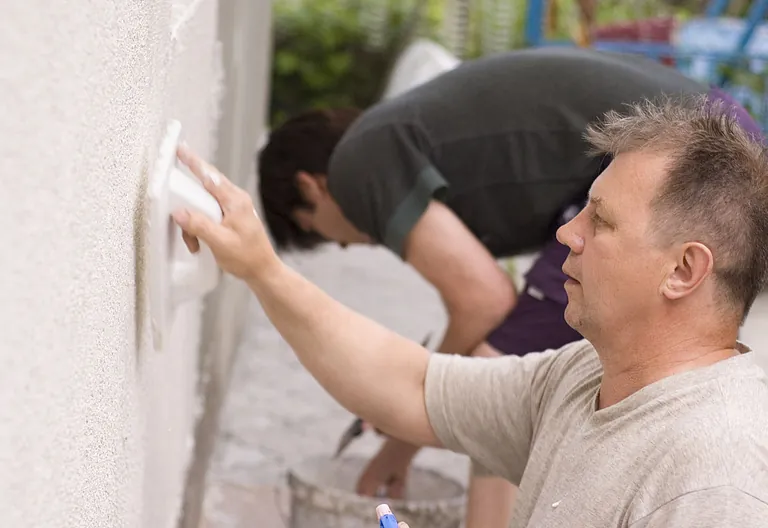Roughcast Cleaning: What Works (and What Definitely Doesn’t)
So, you’ve got a roughcast (also known as harling or pebble dash) exterior and you want to keep it looking its best. But how do you clean it properly without damaging it? Let’s break down what you need to know—from understanding the material to safe cleaning methods, and even when it’s time to call in the pros.
What Exactly IS Roughcast, Anyway?
Before you even think about scrubbing away, it helps to know what you’re working with. Roughcast is basically a mix of:
– Binder: Usually cement, lime, or a combo of both.
– Aggregates: Bits of gravel, crushed stone, or similar materials that give it that distinctive, bumpy texture.
This combo makes roughcast tough and weather-resistant—perfect for standing up to the elements. But that texture also means cleaning it isn’t quite as simple as hosing down a smooth wall. If you’re looking for expert advice or professional services on this topic, click this link.

Why Inspection Comes First
Jumping straight into cleaning can cause more harm than good. Here’s what you should check before you start:
- Figure Out the Surface Type
Not all roughcast is created equal.
– Some are coarse and can handle a bit more elbow grease.
– Others are delicate and need a gentle touch.
Knowing what you have helps you pick the right cleaning tools and avoid accidental damage.
- Look for Structural Issues
Keep an eye out for:
– Cracks or bulges
– Loose patches
– Signs of the surface pulling away
If you spot these, hold off on cleaning and get them checked out. Cleaning over damage can make things worse.
- Check for Contaminants
Is it just dirt, or is there mold, algae, or efflorescence (those white, chalky stains)?
– A quick visual check is usually enough.
– For stubborn or hidden nasties, moisture meters or swab tests can help.
Gentle Ways to Remove Dirt & Algae
Roughcast can be surprisingly delicate, so always go for the least aggressive method first.
Here’s what works:
– Soft-bristled brushes or gentle scrubbers
– Light, consistent pressure (no need to muscle it!)
– Pre-soaking stubborn areas with water to loosen grime
– Work from the bottom up to avoid streaks
Pro Tip: For algae, use a brush specifically designed for it—those soft bristles get into the nooks without scraping off the finish.
Safe Cleaning Products for Roughcast
Choosing the right cleaner matters—a lot! Here are the best options:
Gentle Cleaning Agents
– Look for cleaners labeled “safe for delicate surfaces.”
– Biodegradable products are your friend (they’re effective and won’t leave nasty residues).
– Always skip anything with harsh solvents or acids.
Eco-Friendly Solutions
– Plant-based cleaners, vinegar, or baking soda work well and are kind to the environment.
– Make sure any commercial product says “biodegradable” on the label.
– These options keep both your home and the planet in good shape.
Why High-Pressure Washing Is (Usually) a Bad Idea
Thinking of blasting your roughcast clean with a power washer? Think again.
Here’s why it’s risky:
– Too much pressure can gouge the surface or blast off the protective layer.
– Water can get forced behind the render, leading to damp, mold, and other structural issues.
– It’s easy to mess up and cause expensive damage (not to mention potential injury).
If you must use a pressure washer, keep it on the lowest setting and use a wide spray, but honestly—gentler methods are safer.
Natural & DIY Cleaning Alternatives
If you like to keep things green, here are some easy, eco-friendly options:
– Vinegar: Mix with water for a mild cleaning solution (great for algae and light stains).
– Baking Soda: Sprinkle it on stubborn spots, add a little water, and scrub gently.
– Citrus Extracts: These can help cut through grime without harming the surface.
Always rinse the area well afterward to prevent residue.
When to Call in the Pros
Sometimes, cleaning isn’t enough—or it’s not the real issue. Call a professional if you notice:
– Cracks (especially if they’re getting bigger)
– Bulging or loose patches
– Persistent dampness, peeling paint, or white stains (efflorescence)
– Large areas of mold or algae that keep coming back
Pros have the tools and know-how to fix underlying problems before they turn into major headaches.
Maintenance Tips to Keep Your Roughcast Looking Great
A little regular TLC goes a long way! Here’s what you can do:
– Inspect at least twice a year (spring and autumn are good times)
– Clean off dirt, moss, and algae before they build up
– Repair cracks or chips ASAP to keep water out
– Check gutters and downpipes to make sure water isn’t pooling near the walls
– Consider a protective sealant—especially in wet climates
Set yourself a reminder to do these things seasonally, and your roughcast will stay in top shape for years.
Bottom line:
Roughcast is tough, but it does need the right care. Be gentle, use the right products, watch for signs of trouble, and don’t be afraid to get expert help when you need it. Your home will thank you!
